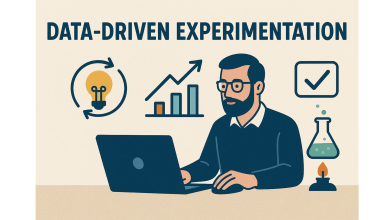While 2022 may be a new year, the onus in which the pandemic placed on businesses to be flexible to change remains strong. Digital transformation continues to be at the heart of every industry’s approach to being more resilient and achieving business success amid yet another pandemic wave. In fact, IDC forecasts that global spending on the digitalisation of business practices, products, and operations will reach more than 2 billion by 2025.
Core to digital transformation strategies will be an investment in the cloud. Recent research from Cloudera supports this, finding that managing data with at least some cloud capacity is a priority for many IT decision makers (87% ITDMs) within their organisation. In addition, 85% currently house data and performance analytics in some cloud capacity. ML models powering AI use cases are becoming more ubiquitous for organisations adopting industry 4.0 technologies. However, for those models to produce meaningful outcomes, data lifecycles need to be optimised, reinforcing the importance of having a hybrid data cloud environment.
As such, given all the changes the world of business and technology has gone through, now would be a good time to take stock of what will be the focus for IT leaders in the coming months as they look to accelerate their digital transformation journey.
Addressing AI bias: taking a more practical and holistic approach to achieving ethical AI
AI can be considered the catalyst for digital transformation. It helps companies be more innovative, generate new business insights, and speed up the time to market for products to keep pace with consumer demand.
While the benefits of AI are vast, in recent times conversations around how AI systems can instigate harm and how bias within AI systems can entrench discrimination faced by already marginalised groups have only increased. In the UK, this has resulted in legal action by activists. It has also led to the general public being more conscious of how their personal data is collected and used.
In response to growing public awareness, regulators are frequently introducing and strengthening guidelines and legislation to tackle AI-facilitated harms. In 2021, for example, the European Commission proposed a risk-based legal framework for regulating AI systems. It aims to prohibit ‘AI systems’ that are considered “a threat to the safety, livelihood and rights of people”.
Legislative moves such as these are welcomed but they cannot be considered silver bullets in fixing the issue, rather they signal to tech companies, and businesses using AI to give serious consideration to the ethics and potential harms of AI.
Considering the above, in 2022 we hope to see more companies being purposeful about developing solutions that are rooted in transparency and ethical uses of data. This requires an approach to AI development and MLOps that builds accountability, auditability, and effective feedback loops into the machine learning lifecycle.
Upskilling internally will be integral to successful digitalisation
The skills shortage within the tech industry has been a problem facing executives for a number of years, creating a knock-on effect on the viability for businesses to carry out their digital transformation agenda. Analysis from Gartner found that IT executives see the talent shortage as the most significant adoption barrier to 64% of emerging technologies. For IT leaders, there is a clear acceptance that emerging technologies can boost business outcomes; however, finding the right employees to manage such operations is proving to be a major inhibitor. While hybrid and remote working accelerated in 2021, allowing organisations to tap into the international applicant pool of trained and technical experts, the skill shortage remains a challenge.
In 2022, adjustments to recruitment and retention practices will be crucial to overcoming the talent gap. Clear commitments must be made to upskill the current workforce to meet the demands of the business. To achieve this, a collective endeavor is required. Collaboration between education institutions, government bodies and businesses themselves will be crucial to helping solve the skills crisis. What’s more, is that data needs to be used more effectively. Cloudera research reveals that nearly half (47%) of IDTMs plan to use data and analytics tools to help them address the challenges they face around workforce diversity in the next 12 months. Tapping into data through 2022 to help address the skills crisis is paramount.
Hybrid data cloud to take centre stage
The shift to cloud computing has been one of the most significant tech trends of the last few years. In 2022, we can expect to see hybrid data cloud being a core focus for the C-suite. While companies are becoming increasingly cloud-centric, the reality is that data-centricity is still fundamental for all businesses looking to grow and adapt.
Being able to retrieve and analyse data wherever it may reside is a key priority for business, especially with regulations such as Schrems II creating new rules around the processing and handling of data. For this reason, in 2022 it is expected that companies will be investing in a hybrid data cloud, especially those organisations that have highly dynamic and changeable workloads. In fact, the majority of ITDMs (87%) agree that businesses that implement a hybrid architecture as part of their data strategy will gain a competitive advantage.
2022: Upskilling, AI ethics, hybrid data cloud
The roadmap to successful digital transformation isn’t always smooth. Over the past year, businesses have had to be agile and adapt in the face of adversity from the ongoing pandemic to Brexit negotiations impacting supply chain issues and creating new data regulation implications. However, while 2021 was anything but predictable, there are valuable lessons businesses can learn from and lay the foundations for shaping the changes to come. As we start the new year, companies will do well to keep on top of internal upskilling, the ethical side of AI, and preparing for hybrid data cloud to achieve the most out of their transformation goals.




Great work! The top trend to look out in 2020 is AI and Automation.